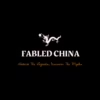In ancient times, the grains and weeds grew together, and medicinal herbs bloomed alongside the flowers. People had no clear understanding of which plants could be eaten and which could be used for medicine. With the increase in population, people needed more food and herbs to treat diseases. At that time, they were often unaware of the properties of the plants growing all around them, and as a result, they sometimes ate poisonous plants out of hunger and died because there was no medicine to cure them.
One day, Emperor Shennong (炎帝) was organizing his tools when a minister came to report that a man by the river had suddenly fallen ill with severe abdominal pain. The pain was so intense that no one could hold him down. Shennong immediately set down his tools and rushed to the river. When he arrived, he saw the man sweating profusely and rolling on the ground in agony. An old man tried to give him a herbal remedy, but despite great efforts to administer the medicine, it had no effect, and by evening, the man had passed away.
Seeing the suffering of the common people, Shennong made a solemn decision. He decided to personally taste various wild plants to determine which ones were safe to eat, which could be used as medicine, and which ones were poisonous. Although he knew there was a high risk of poisoning, he was determined to prevent future suffering from hunger and toxic plants. He took it upon himself to protect his people, even if it meant risking his life.
To learn the properties of different plants, Shennong worked tirelessly every day. He carried a bamboo basket on his back, traveling across rivers and mountains without fear of hardship. Sometimes, he would encounter wild beasts or poisonous snakes, but he never hesitated, for the suffering of his people was more important than his own life.
Many beautiful legends have been passed down about Shennong’s efforts to taste the herbs. One story tells of a time when he placed a certain herb in his mouth, only to feel his head spinning. He collapsed to the ground, realizing he had been poisoned. Unable to speak, he pointed to a bright red Lingzhi mushroom growing nearby and then pointed to his mouth. His attendants quickly picked the Lingzhi and fed it to him. After consuming the Lingzhi, the poison was neutralized, his dizziness subsided, and he regained the ability to speak. From that moment on, people believed that Lingzhi could bring the dead back to life.
Shennong did not stop tasting plants, and as a result, he was frequently poisoned. It is said that in one day, he was poisoned over 70 times. To counteract the poison, he always carried a type of herb known as tea (a homophone for “check” in Chinese). Legend has it that his body was completely transparent, allowing him to see his internal organs clearly. Whenever he consumed a toxic plant, he would immediately drink tea, which would travel through his digestive system to flush the poison out of his body.
The final plant that Shennong tested was a vine called “Hulumanteng” (葫蔓藤), which had leaves resembling the herb Huangjing and purple stems. The plant bloomed with yellow flowers, and its early growth was very similar to Huangjing, but it was actually what we now call “Chuanxin Lian” (断肠草), or “Breaking the Heart Grass.” It is said that this plant, when touched by human saliva and swallowed, would cause the intestines to turn black and become sticky, leading to excruciating abdominal pain and death. Shennong, at the time, was 120 years old, which was considered very old by ancient standards.
Through these touching legends of Shennong’s life, we can understand the hardships and dangers he faced in tasting the herbs. He traveled through mountains and valleys, using a wooden pole to reach difficult places, tasting every plant he encountered. His efforts were not in vain! He discovered that rice, wheat, millet, barley, and beans could be used to stave off hunger—these became the “Five Grains.” He also identified edible vegetables and fruits, recording them all. Furthermore, he identified 365 different medicinal herbs, compiling them into the “Shennong Bencao” (神农本草), a seminal text that helped to treat diseases and ailments.
While tasting the plants, Shennong also observed the seasonal changes in plant growth and how different plants thrived in different types of soil. He came to realize that plants could be cultivated according to the changes in weather and soil types, leading him to teach people how to artificially cultivate plants. This method allowed them to collect fruit and seeds for food in a more planned and organized way. This was the beginning of agriculture in China.
Through Shennong’s tireless efforts, humanity learned how to differentiate between useful and harmful plants, and the foundation for Chinese agriculture and medicine was laid.
